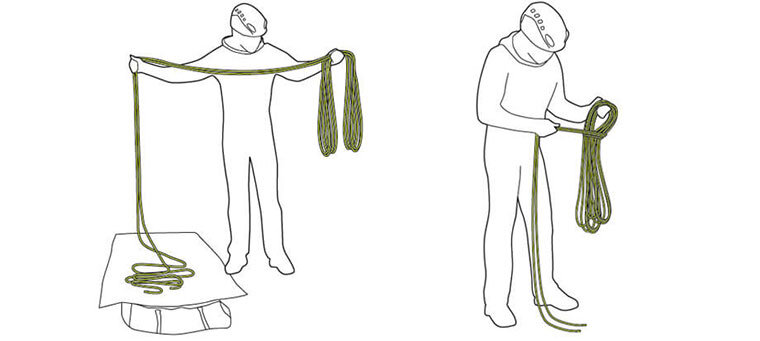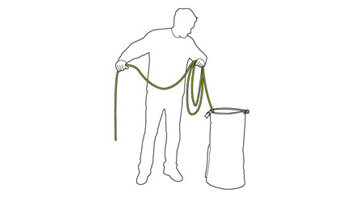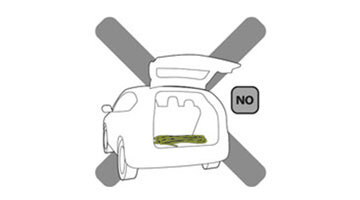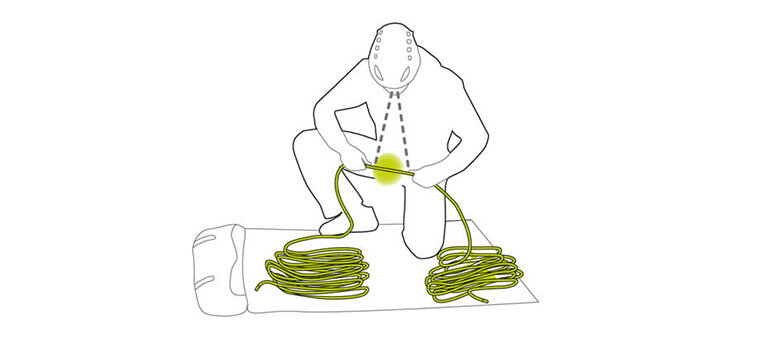All EDELRID ropes meet the very highest quality and safety standards. Every meter has been carefully manufactured and finished. Our ropes are subjected to rigorous testing. They are prepared in the best way possible and are ready to be used all around the world.
When you buy an EDELRID rope, our work is over; the rope becomes your responsibility and you stand at the beginning of a great adventure. There are a few basic rules that every climber should observe in order to get the best out of their rope. It's important not to forget that a rope is essentially a textile product and should be looked after and used accordingly. Here are some practical tips for looking after your rope.
UNCOILING
Most ropes are coiled and packaged before they leave the factory. This is why it's important to carefully uncoil your rope when you unpack it to reverse this process. If you don't, you might end up with unwanted twists and kinks.
To uncoil your rope, carefully remove the securing bands, slide your lower arms though the middle of the coil and then pull them apart so that the rope forms a ring. Keeping the tension on the coils, rotate your lower arms slowly around each other to carefully unwind the rope into a pile on the floor. Take care that no loops get wrapped around your wrist. Once the whole rope has been uncoiled, run it through two or three times and shake it out to remove any last twists or kinks. When you are finished, coil up the rope, or even better store it loosely in a rope bag. It's best to carry out the whole process indoors or over a rope bag, to ensure that it remains free from dirt.






